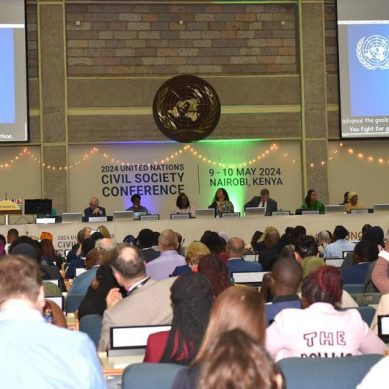
It is clear the government of Uganda has exclusively chosen chemical warfare to combat locusts. Pesticides are the chemicals of choice. However, the government has not been so open as to tell the country what particular pesticides it is using to combat locusts.
We know some chemicals have been ordered from Japan by the government and were expected to have arrived in the country, but I don’t know yet which trademark the chemical came in.
The history of man-locust interactions in modern times over past three decades indicates that persistent organic pesticides (POPs) have been used to combat locusts, especially in the Sahel countries such as Togo, Senegal and Chad. The same chemicals have been used in Africa south of the Sahara to combat a variety of pests. The chemicals include Dieldrin and DDT, BHC and Aldrin although most European and North American countries have overwhelmingly banned them from as early as 1974 because of their diverse environmental impacts, especially the ecological-biological dimension of the environment.
Although the so-called “safer” and less persistent pesticides were tried in Senegal against locusts in the late 1980s, they were found to be fairly toxic in the shorter term, to many non-target organisms (that’s, all aquatic animals, many birds and insects, including the natural enemies of locusts. It emerged that the fledglings of insect-eating birds were particularly affected because of being deprived of their natural food source. Also, pesticides kill many invertebrates fauna such as bees, wasps, beetles, butterflies and moths. This means that “safe pesticides” is a myth. It means violation of commitment to conservation.
The pesticides get concentrated in the food chain and frequently harm humans too. Many cancers that are increasingly claiming the lives of Ugandans – young and old – may be traced to unwise use of pesticides.
The question, therefore, remains: Which pesticide is the government of Uganda using against locusts – the allegedly safe pesticides or the absolutely unsafe pesticides (the POPs)?
One may not fail to suspect that chemicals similar to Dieldrin may have been the chemicals of choice under different trademarks or branding. In the past Dieldrin was made by Royal Dutch Shell Group, at least until 1990, but it dismantled its plant and stopped selling it for any purpose. The possibility that it is being sold under different names by other firms outside Europe and North America is high, for we live in a criminal world dominated by criminal multinational corporations. Dieldrin, by virtue of its persistence and toxicity, remains a candidate for use in Africa in general and Uganda in particular.
Sadly, so far the government of Uganda is not involving farmers in its pesticide strategy to combat locusts. It is chemically combating locusts for but not with farmers, thereby rendering the farmers a collective lot of onlookers.
Luckily, the locust threat in Uganda came when in most parts of the country it was post-harvest period, even in areas they were reported to have landed. So damage to crop fields was almost absent. If the locusts laid eggs then the hatchlings from the eggs (the nymphs) might be far more dangerous than the adult locusts later on.
Unfortunately, whether or not use of pesticides should continue to be the unchallengeable strategy against locusts, has not been amply discussed publicly or in government circles. In other words, there is no pesticide debate in Uganda although globally there is what can be characterised as The Great Pesticide Debate. Because of this status quo, it is government alone declaring where the locust are or are not.
For example, the minister of agriculture announced recently that the locusts had migrated to South Sudan and then enjoyed a back-migration, necessitating more money for chemicals to combat them. NGOs, which are involved in areas such as environment, health and human rights have assumed a conspiracy of silence. Intellectual pesticide debates at university campuses are also generally absent. The silence can be attributed to fear in the country.
Also, although in the Sahel region where locusts such as the Desert Locust, schistocerca gregaria, migratory locust, locusta migratoria migratorioides and the tree locust, anacridium melanorhodon, have attracted donors for decades to finance controlling them, in the case of Uganda we do not know to what extent donors are involved because government has been silent on any donations from anywhere, globally, regionally and nationally. The impression created is that all funds are coming from government alone. This is not likely to be sustainable if locusts continue threatening the country. The government has no money, according to what it has told Ugandans, but we also know a lot of money is allocated to non-priority areas such as financing politics and political actors at all levels of society.
What control methods using pesticides is government employing in the chemical warfare against locusts?
1. Aerial spraying using aircraft
Well, we now know that government has been using the aerial treatment method involving aerial spraying by planes. This method has been employed elsewhere to control locusts when the swarms occupy large areas and ground operations are impossible or inadequate. However, aerial spraying requires that there is adequate ground support, adequate aviation fuel, adequate pesticides, efficient maintenance of the landing strips, accurate identification of target areas and monitoring and evaluation of the effectiveness of the aerial treatment.
If both ground and aerial actors do not coordinate and concurrently understand the constraints under which they are working aerial treatment may end up being a flop and a wastage of money. It is admittedly very rapid but initial logistical problem can frustrate the effort. We have seen this when sustainable availability of planes, pesticides as well as trained manpower could not be assured. Besides, considerable expertise and experience are required to ensure successful operation. Also the use of the right dose for the pesticide in use could be another constraint. It is absolutely important that the ground team had the skill to survey dense populations, indicate targets, guide pilots and check on treatment accuracy and effectiveness.
However, to go around this problem the Uganda government has been using helicopters, some hired from Nairobi, Kenya. This has allowed combining spraying and carrying out ground surveys. Lessons learned can be useful for future operations. Unfortunately, the use of planes can be ineffective and wasteful unless well-timed and targeted precisely on the most vulnerable areas before harvest. This condition can be extremely difficult to meet. The method is fraught with much corruption. Excessive amounts of money is allocated without prior meaningful and effective assessment of the requirements.
2. Treatment by vehicles
Spraying with vehicles requires a lot of resources but not as much as aerial spraying. Besides, it covers less ground than aerial spraying. However, farmers are not involved to any appreciable extent. Moreover, the exhaust nozzle sprayers that have been used for decades do not spray efficiently and put a lot of strain on the vehicle engine.
Fortunately, there are now newer, more efficient spray machines, including Ulvamast, which do not stress the vehicle engine for power. There is, however, need to keep testing and refining the equipment. This requires, and will continue to require, forging collaboration between fieldworkers, trainers, scientists, technicians, manufacturers and donors.
However, in a country where erosion of democratic, independent-thinking, critical thinking, academic and intellectual resources are manifesting supersonically, mainly due to fear and much political influence, this necessity may not be easy to achieve. The process of collaboration may be heavily corrupted or even denied adequate resources.
3. Ground treatment
The above-mentioned methods require professional locust control staff without the involvement of participation of the local population. However, ground treatment requires the direct involvement of farmers on foot as opposed to helicopters, planes or vehicles. Professional staff provide training and supervision and also ensure that the necessary materials are delivered in time and space. The farmers help to describe infestations and provide labour for the control of locusts. The key feature of treatments on foot is the relatively small area covered. However, there must be good management training, and village brigades and leases must be erected to ensure early season control is smooth and effective. Continued training and support to individual farmers and the villagers in the brigades are critical to success. Brigade services include monitoring, early warning and encouraging use of non-chemical methods such as egg pod collection and building on traditional practices and local ecological knowledge (LEK).
One method, which is the simplest, is that farmers are quickly trained to use dusting bags and have the freedom to make their own equipment. The farmers work cooperatively with pest control staff directly. The farmers are allowed to treat the edges of their crop fields when the densities of the locusts are high. They use dilute pesticide dusts. However, while these are relatively easy and safe to apply, they need to be transported to the villages by vehicles because they are bulky and this must be done in the dry season.
Conclusion
At least three locust control methods using pesticides exist. Only one of them involves farmers and the community – that is the ground treatment method. It is important to mention that the Sahel region, which is the more natural home for locusts, has taught us that whatever method is used, the danger of pesticide poisoning of humans, other beings and the soil remains real. There are so many reported pesticide poisoning cases.
Unfortunately, inadequate medical services and low levels of individual health may mean that illness from pesticide poisoning may not be recognised or taken to be due to other causes. It is critical that the pesticides use method is rethought. If locusts become a common pestilence in East Africa in general and Uganda in particular, non-chemical methods will need to be taken seriously to minimise pesticide poisoning.
Fortunately, biological control methods exist. For example, when in 1762 the Indian Mynah bird, acridotheres tristis was introduced in Mauritius it substantially reduced the red locust problem. There is need for research on the possibilities of using fungi to kill locusts. Also other pathogens – disease causing organisms – may be used as baits, but they have been found to be less effective or practical as locust control agents. However, use of bacteria and viruses could be effective in locust control and need to be researched. There is need to research into the possibility of putting locusts off their food source as another biologically based method.
Last but not least, use of pheromones, which insects produce to signal to each other, thereby controlling their behaviour, could be used to prevent or disrupt gregatisation of the locusts. This too needs to be researched.
- A Tell report / By Prof Oweyegha-Afunaduula, a former professor in the Department of Environmental Sciences of the Makerere University, Uganda











